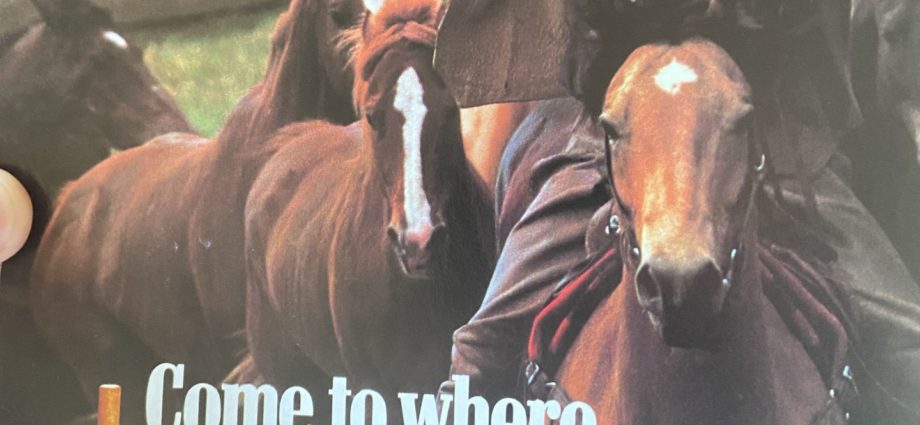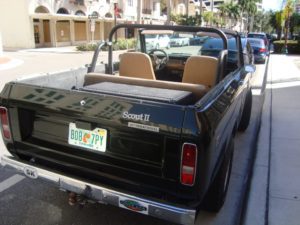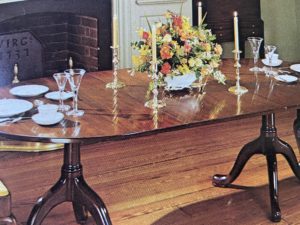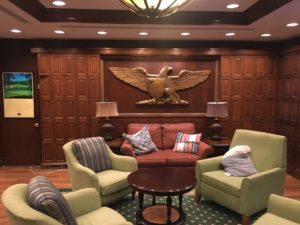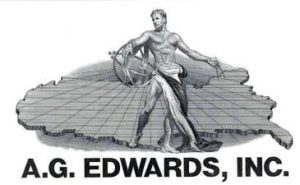In our modern age, one of the biggest legacies we will leave is our products and services — the thousands of consumer items and corporate names that run through our lives: the Ukrop’ses and Capital Ones, the Reynolds Wraps and ChapSticks.
Those names have evolved through the years. Indeed, the mark of a truly Richmond institution is its longevity. Richmond has produced some truly great brands that have survived an ever-changing business climate. Some — such as Bank of Virginia, Miller & Rhoads and Berry-Burk — have not.
A company’s success is ultimately judged by the quality of its brand. How valuable is the business? What is the market potential? Can it survive a merger?
The stronger the brand the more likely it will be around a decade from now.
In our quest to uncover the secrets to building great businesses, INSIDE BUSINESS set out to find Richmond’s best brands. We assembled a panel of judges — some of the best minds in our rich advertising community — and asked them to rank Richmond’s best by judging several key characteristics.
Consideration included not just the quality of company logos, but how well products translated in their market segments, how well the companies use the brands, how long the brands have been used, and how much intangible appeal brands have.
Judging a company’s brand is no easy task. The question of whether Luck Stone is a better brand than SIR Research is, on its face, an answer to a question that perhaps needn’t be asked. However, in their respective fields of retail stone sales and market research, both brands are well-known and well-respected in the market.
Certainly, people will debate sins of both commission and omission. This list is not meant to be a final determination, but instead a departure point to indicate the wealth of brand names here in Richmond. Even more importantly, it should show that in an era of the multinational brand and corporation, regional brand names that define us as “Richmond” still are going strong.
1. Ukrop’s
Who’s really surprised? It probably goes without saying that Ukrop’s Super Markets is the top brand in Richmond. It’s difficult to argue against Ukrop’s being No. 1, and that may be the greatest compliment. That a brand is so powerful it dictates not only how but when we shop — it’s not on Sundays, the second-busiest shopping day of the week — is an amazing feat.
Ironically, the company is not as strict with the use of its logo as one might imagine. Indeed, as Ukrop’s uses the logo more and more, decisions about where and how to place the family name are made by an in-house committee.
“We take it on a case-by-case basis,” says Scott Ukrop, the chain’s vice president of marketing.
The current Ukrop’s logo is perhaps the least sophisticated of our top 10, proof indeed that the appeal of the brand encompasses all the good feelings that Richmond has about Ukrop’s and its famous customer service.
The company has expanded the use of the Ukrop’s brand with a line of Ukrop’s products, which now accounts for 17.5 percent of the chain’s sales. In conjunction with this effort, the company recently launched the Ukrop’s Brand Gang, a marketing campaign that involves a “gang” of Ukrop’s employees in western garb visiting customers’ homes.
During the company’s 50th anniversary in the mid-1980s, the company introduced a whole new look with a set of print ads done by legendary adman Bill Westbrook. The logo is still in use today.
The 1980s revamp replaced a carnival-looking logo with the Ukrop’s letters done in fat serif type. The lettering, which has a sort of retro appeal almost 20 years later, can still be found around town.
“The carnival letters still show up on buildings,” Ukrop says.
While many larger chains would be worried about this conflicted image, Ukrop’s is not. The 1980s-vintage logo still holds up pretty well and the company has little impetus to change.
“It’s a low-margin business,” Ukrop says. “You can’t make too many changes.”
2. The Jefferson Hotel
The Jefferson has a long history, often told, but worth telling again and again. Maj. Lewis Ginter founded the hotel in 1895 when he decided that Richmond needed a world-class hotel. Naming it after the Virginian he most admired, the Jefferson quickly became one of the most famous hotels in the South. Designed by Carrere and Hastings, the architectural firm that designed the New York Public Library, the hotel burned in 1901. It was rebuilt and reopened in 1907. After a long run, it was closed in the late 1970s and was nearly torn down. A consortium of leaders, including developer George Ross, restored the hotel in the mid-1980s.
Today, it is owned locally. It recently won five stars from Mobil Travel Guide, making it the leading hotel in the state and one of the best in the world. Through its history, it has had many incarnations and owners. Its current owners, led by William H. Goodwin Jr. and Beverley “Booty” Armstrong, have reportedly spent $20 million in the last decade to keep its standards up. One thing they have not changed is the classic Hotel Jefferson crest and logo that were used more than a century ago.
The logo is used carefully, and is taken from the “TJ” that is in stained glass in the lobby. It also is used on golf shirts and T-shirts sold in the gift shop — guests can even buy a crested bathrobe. Currently, the hotel is tweaking the look again, switching from hunter green to a dark blue at the suggestion of the Meridian Group, the hotel’s ad agency. The logo will not change, but the color switch will update the brand and keep it fresh.
“We realized it was time for a new look,” said Jennifer Barnes Crisp, the hotel’s director of sales. “The green gave it a less rich impression.”
3. Reynolds Wrap
If ever there was a quintessentially Richmond product, it is Reynolds Wrap, created by Reynolds Metals. Today, aluminum foil can be found in 98 percent of America’s kitchens. In a recent survey of perceived quality by Total Research Corp., Reynolds Wrap also was listed as one of the top 10 brands, joining marques of renown such as Waterford Crystal, Craftsman tools, M&Ms, Crayola Crayons, WD-40 and the Discovery Channel.
Reynolds Wrap first appeared in Richmond in 1947 and spread up and down the East Coast. The brand hit a speed bump in the Korean War, which created a huge demand for aluminum and halted the brand’s expansion. By 1976, when Reynolds created the Reynolds Kitchens for the bicentennial, it was established as one of America’s great brands. Today, Reynolds Wrap has spawned products such as Reynolds Baking Cups, Reynolds Freezer Paper, Reynolds Plastic Wrap and the Reynolds Bright Ideas Arts and Crafts line.
Such is the power of the brand that when Alcoa purchased Richmond-based Reynolds Metals, it kept the Reynolds Wrap brand name. And while Reynolds Metals is no more, Reynolds Consumer Products is headquartered here, with its commercial spokeswomen Betty and Pat, who are destined to join Mr. Whipple and Madge in the pitchman hall of fame.
4. WWBT 12
First known as WRVA television, WWBT skates dangerously on the edge of not being a Richmond brand at all. It uses the NBC peacock as its logo, and takes its name from a venerable and pioneering radio station in Charlotte, N.C., that began broadcasting in 1922. WWBT began in 1958 as WRVA TV, led by investors that included the Larus and Brother Tobacco Co., which was known across the globe for its Edgeworth and Holiday brands of pipe tobacco. The station was a spinoff of WRVA, and came in the wake of WTVR Channel 6, which is billed as the South’s first television station.
Since the station opened, it has become a part of the Richmond landscape even as it changed its name from WRVA to WWBT and was sold to Jefferson Standard Broadcasting Co. in 1968.
5. ChapStick
While this product is no longer made by a Richmond company, it still is manufactured at Wyeth Consumer Healthcare’s Darbytown Road factory. It has a long association with Virginia, invented in the 1880s by a Lynchburg physician. Early ChapStick resembled, according to an old A.H. Robins press release, a “wickless candle wrapped in tin foil.”
In 1963, the brand came to Richmond as a subsidiary of Robins, now Wyeth Consumer Healthcare. Through the years, the company brand has been extended into dozens of variations and the metal tube has turned into plastic. In the 1970s, the brand dominated with ever-present commercials featuring skier Suzy “ChapStick” Chaffee. Robins also tried to move the ChapStick brand into lipstick, with a spinoff called LipQuencher that was promoted by “Wonder Woman” actress Lynda Carter.
Imitators have come too, with upstart Blistex now giving ChapStick a run for its money. One thing hasn’t changed — Wyeth still sells classic ChapStick in the black plastic tube. It still sports Richmond on the label.
6. Bottom’s Up Pizza
When Bottom’s Up Pizza opened in Shockoe Bottom, founders Coalter Turpin and Dirk Graham started it for a number of reasons. The key reason being that they couldn’t get good pizza from the national chains. In fact, they couldn’t get any pizza at all. “Nobody liked to deliver down here,” says manager Charles Lichter.
The restaurant has been a hit from the beginning, and today sells about 100,000 pizzas a year. The current logo was designed by Austin Fitch, who once worked at Bottom’s Up.
“He’s a jack of all trades and a bartender at Bandito’s,” Lichter says. “He’s always had the artistic edge.”
Fitch’s logo was the company’s second, and now appears on not only pizza boxes, but on the T-shirts that have evolved into a second business for the restaurant. Today, Graham is the sole owner of what is now one of Richmond’s best-known restaurants and brands.
7. Marlboro
Originally, Marlboro was one of a stable of cigarette brands that came to New York from London in 1902 when Philip Morris Cos. moved its headquarters. With that move, the company brought brands that included Marlboro, Cambridge and Derby.
In 1924, Marlboro was reintroduced as a woman’s cigarette. However, the brand was recrafted in 1955 with the advent of cigarette filters. Instead of marketing the cigarettes to women, Philip Morris would market the cigarettes to men with the creation of the Marlboro man. The cigarette quickly became a hit, and the Marlboro man one of the most recognized figures in advertising. By 1972, Marlboro, with its trademark red top, had become the best-selling cigarette in the world. And ever since, the cigarette market has been Marlboro Country.
According to Financial World magazine, Marlboro is the most valuable brand name in the world with sales of $30 billion a year. This cigarette provoked an argument among our judges — is it a Richmond brand, or not? Our conclusion: While it was not born here, Richmond is on the box. And while we might not see Marlboro ourselves as a quintessentially Richmond-brand name, we guess that the rest of the world does.
That might also mean that the rest of the Philip Morris brands would also be considered Richmond brands, and we could easily make the case that brands like Virginia Slims, Merit and Chesterfield should be on the list. In fact, they should, if we were to be consistent in our criteria. The problem is that Philip Morris makes so many top brands, that its stable would clutter up the entire list. Ergo, the fallback position: we claim Marlboro, but not the rest.
8. Scott & Stringfellow
While many local brokerages have ditched their venerable names after buyouts, most notably Wheat First and Branch Cabell, Scott & Stringfellow has survived, and indeed thrived, by keeping its name even after being acquired by BB&T Corp.
Today, “Scott and String,” as it is called by clients in Virginia, North Carolina and South Carolina, has an old-world quality. It has had only three chairmen, all Scotts, in its 109-year history. Richmond tracks its economic life by its Dow sign on Main Street in the Mutual Building, where the company has offices. The whole image speaks of solidity.
President and Chief Executive Officer John Sherman said that when BB&T took over Scott & Stringfellow in 1999, it expressly wanted to keep the brand equity that was in the name and respected the longstanding traditions of the brokerage.
“Scott & Stringfellow is just a name that has been well-known for many generations,” Sherman says.
9. Byrd Theatre
The Byrd Theatre, which opened on Christmas Eve in 1928, has been one of Richmond’s great success stories. In a time when many historic theaters have closed or needed endless public subsidies to stay open, the Byrd has stayed in the business of showing movies on its own.
For many in Richmond, the Byrd, owned by Nelson Communications and Duane C. Nelson, is where movies are seen the first time around. In the last few weeks the theater has shown everything from “Blackhawk Down” to “Harry Potter.” Named for the founder of Richmond, William Byrd II, the theater is known for its ornate interior and exterior, which add a sumptuous setting to any film.
Keeping true to its brand and reputation, the theater still brings an organist in on weekends to entertain patrons. Listed on the National Register of Historic Places, the Byrd has hosted many events including a recent Virginia Commonwealth University French Film Festival. The theater even runs midnight movies — recent offerings have included “Airplane!” and “The Wizard of Oz” set to Pink Floyd.
10. Richmond Ballet
Founded in the 1957, the Richmond Ballet has become a leading cultural force in the city, successfully moving from a cramped and tiny storefront at Lombardy Avenue and Broad Street to an expansive headquarters in downtown Richmond that was donated by Reynolds Metals.
The headquarters has become a sort of icon — designed by Bond Comet Westmoreland and Hiner Architects. The building allows dancers to have a view of the skyline and James River from their studios. In addition, it brought new life to a dead area of downtown right next to the Downtown Expressway. Renovated at a cost of $4.5 million, it was designed to have a “dancing roof line” to emphasize the movement of the ballet that pirouettes inside.
In September 2000, in conjunction with the move, the ballet company had its logo redesigned by Cabell Harris of the ad firm Work. The logo shows two intertwined dancers making an R.
11. Circuit City
Founded in 1949 as Ward’s TV, Circuit City has grown to about 600 stores nationwide. For years, the company used the jingle, “Where service is state of the art.” Of late, the company has used “Imagine That” and “Find it, love it, give it” for a midyear holiday promotion. Later, it introduced a new logo and reminded customers: “We’re with you.”
12. Bull & Bear Club
Founded in 1966, The Bull & Bear Club was founded by two expatriate New Yorkers. “They fashioned the original bed and breakfast after the private clubs of New York and Chicago,” says manager Brian Dodge. The logo, featuring a bull and bear, hasn’t changed even as the club moved to the James Center.
13. Sally Bell’s Kitchen
The story of Sally Bell’s Kitchen is legend. It started in 1924 as Sarah Lee Kitchen, an outgrowth of the Woman’s Exchange, a church program whereby “gentle women of modest means” could earn extra money by baking. The trademark fight between Sarah Lee Kitchen and the national Sara Lee company is the stuff of Richmond legend — founder Sarah “Sallie” Cabell Jones held out for a price to change the name to Sally Bell’s. Today, the trademark boxed lunches are as strong as ever.
14. Maymont
A pioneer in Richmond, Maymont turned a sleepy old house museum into a nonprofit marketing machine. Through the 1970s, it expanded its offerings to include the popular Adopt-a-Living-Thing program as well as the ubiquitous Maymont member stickers that appeared on many a Richmond station wagon. Perhaps the best-known program is the annual Maymont Flower and Garden Show, which could be considered a brand of its own.
15. Sauer’s Extracts
Sauer’s is one of Richmond’s best known companies. Founded by C.F. Sauer in 1887 to sell flavoring extracts, the Sauer’s name and its familiar red oval still appear on Sauer’s spices, salad dressing and barbecue sauce. The company keeps its trademark vanilla sign on Broad Street in top repair — not only does it continue to sell vanilla extract but the sign reminds us how both C.F. Sauer and Richmond have become synonymous. Sauer’s is a private company and does not release sales figures, but its products now are available at not only local grocery chains, but at Kroger and Wal-Mart. We think Sauer’s, with its retro-hip label and yellow can, will be around for a long time.
16. Mrs. Fearnow’s
Yes, there was a Mrs. Fearnow — Lillie Pearl Fearnow — who once took jars of her Brunswick stew to the state fair. Then she decided to take her stew to the Women’s Exchange (yes, the same business incubator that started Sally Bell’s). Pretty soon the stew sold out and by 1946, Fearnow’s sons, Clyde and Nelson, turned it into a business that became Hope Farm in Mechanicsville. Today, that cannery turns out 17,000 cans of Mrs. Fearnow’s Brunswick stew daily.
17. Martin Agency
As far as advertising agencies go, none in Richmond has been or will be as well-known as the Martin Agency Inc., part of the giant Interpublic Group of Companies Inc. Started in 1965, the agency turned Richmond into an advertising hub. With more than $400 million in billings, it handles advertising for Saab, TVLand and United Parcel Service.
18. Meals on Wheels
While most local branches of national nonprofits are content to use a nationally created identity, Meals on Wheels of Greater Richmond has created its own identity tailored just for this area. Founded in 1967, its bright sign on Willow Lawn Drive is well-known to just about everyone in the region and provides a clear image of what the charity does.
19. Schwarzschild Jewelers
Born in 1879, William Harry Schwarzschild got his start at the Old Dominion Watch Co., which he moved to Broad Street in 1903. There, he and his brother, Sol, established Schwarzschild Bros., which continues today. Now a sister company to Shreve Crump & Lowe, Schwarzschild has had much turnover in leadership. Still, the brand is as strong as ever.
20. Pleasants Hardware
Since 1915, this chain has been the best-known name in Richmond hardware. It has grown recently by acquiring the local Tom Brown Hardware chain, which it rebranded under the Pleasants banner. Today, it has five stores and lives up to its “Most Anything” label by stocking more than 50,000 items.
21. Lewis Ginter Botanical Garden
Named after famous Richmonder Lewis Ginter, the Lewis Ginter Botanical Garden was founded at Bloemendaal, the country home of his niece, Grace Arents. As the garden has grown, it not only has assembled an encyclopedic collection of plants, but branded itself into a full-scale tourist destination with a major part of its income derived from gift shop sales. The result? A clear identity as one of the city’s top cultural institutions.
22. Robitussin
Of the gems of national consumer brands that American Home Products picked up when it bought Richmond-based A.H. Robins was Robitussin, which now appears on dozens of cough drops and syrups.
It has become so well known that its name has been turned into a verb — the very scary practice of “Robo-ing” where kids get Robitussin (or other cough syrups) and chug it to get high off of its active ingredient, dextromethorphan. While the Robins name is no longer on the package, the Robitussin brand survives.
23. Saxon Shoes
When Saxon began in 1953 at 410 E. Grace St., it was an upstart. In Virginia, and since the late 19th century, Norfolk-based Hofheimer’s was king. So when Jack and Gloria Weiner opened the store, they had to do something different. They focused on women’s orthopedic and children’s shoes. In 1989, the Weiners opened a store in an old A&P grocery on Parham Road and became one of the largest independent shoe retailers in the nation. After a fire last February, the company earned even more goodwill for keeping its employees on the payroll while the store was closed.
24. Children’s Museum of Richmond
The Children’s Museum grew exponentially with its move to Broad Street next to the Science Museum of Virginia. Today, its trademark puzzle logo is one of the best-known cultural brands in the city and one of our top cultural destinations. The museum celebrated its 20th anniversary in 2001.
25. Joe’s Inn
It is quite difficult to pinpoint the appeal of Joe’s Inn, the longstanding eatery in the Fan. Suffice to say it does what it has been doing well since 1952. Say “club steak” or “spaghetti a la Joe” and you know exactly what to expect. The restaurant capitalized on this strong brand identity in 1997 by opening a new restaurant in Bon Air. In addition, the family-owned restaurant sells Joe’s Inn marinara sauce and house dressing along with the usual T-shirts.

